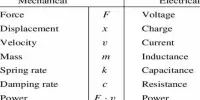Rechargeable batteries are essential for meeting the world’s expanding energy demands in a sustainable manner, however not all rechargeable batteries are created equal. Researchers at the Okinawa Institute of Science and Technology Graduate University’s Energy Materials and Surface Sciences Unit have been working to improve a promising contender for such energy sources, lithium-sulfur batteries. The study was published today in Nature Communications.
Rechargeable batteries are more expensive at first than disposable batteries, but they have a lower total cost of ownership and have a lesser environmental impact because they may be recharged several times before they need to be replaced. Some rechargeable batteries come in the same sizes and voltages as disposable batteries and can be used interchangeably.
“Lithium-sulfur batteries can store more energy than the lithium-ion batteries that are already commercially available,” said Dr. Hui Zhang, first author of this study.
“To put this in numbers, an electric vehicle that runs on lithium-ion batteries can drive an average of 300km before it needs to be charged. With the improved energy storage provided by lithium-sulfur batteries, it should be possible to extend this to 500km.”
The biggest roadblock to the commercialization of lithium-sulfur batteries has been the intermediate product’s susceptibility to dissolution. The sulfur will react with the lithium to generate a product throughout the battery’s creation.
This is divided into two stages. The first result will be lithium polysulfide, which will dissolve easily into polysulfides. If this happens, the polysulfides will degrade the battery’s performance, reducing its lifespan significantly.
To maximize the batteries, the lithium polysulfide must be transformed as soon as possible into the end product, either Li2S2 or Li2S. The researchers used two separate materials to accomplish this: TiO2, which absorbs the undesirable polysulfides, and TiN, which speeds up the process.
Lithium-sulfur batteries can store more energy than lithium-ion batteries that are already commercially available. To put this in numbers, an electric vehicle that runs on lithium-ion batteries can drive an average of 300km before it needs to be charged. With the improved energy storage provided by lithium-sulfur batteries, it should be possible to extend this to 500km.
Dr. Hui Zhang
“Using these two materials, we developed a hybrid that is low cost and easy to apply,” said Dr. Luis Ono, second author of this study. “We found that it had an excellent ability to improve the battery performance.”
These materials are extremely delicate. The researchers worked on a nanoscale scale to maximize the battery’s efficiency. They discovered that combining 10nm TiN and 5nm TiO2 produced the most efficient product. The performance of the batteries was considerably increased once the polysulfides were absorbed and the entire process was hastened.
This resulted in a faster charging time, a longer charge interval, and a longer overall lifespan. The researchers tested the battery for 200 cycles and discovered that its efficiency was nearly same.
“We will continue to further optimize the materials to improve the performance,” said Professor Yabing Qi, senior author of the study and head of the Energy Materials and Surface Sciences Unit at OIST. “There are a lot of brilliant minds working on lithium-sulfur batteries and it’s a really promising and exciting technology.”
In summary:
- To fulfill the world’s expanding energy demands in a sustainable manner, high-quality, rechargeable batteries are required.
- Lithium-sulfur batteries, which can store more energy than other rechargeable batteries, are attractive prospects for the next generation of these energy sources.
- A widespread, soluble difficulty with the manufacture of lithium-sulfur batteries must be overcome before they become widely used.
- The researchers developed a hybrid material that both speeds up the construction process, reducing the possibility of an issue and absorbs any undesired byproducts produced during the process.
- As a result, a lithium-sulfur battery with a longer life duration, a faster charging time, and the ability to run for extended periods of time between charges was developed.
The OIST Technology Development and Innovation Center’s Proof-of-Concept Program helped fund this research. Automobile starters, portable consumer devices, light vehicles (such as motorized wheelchairs, golf carts, electric bicycles, and electric forklifts), road vehicles (cars, vans, trucks, motorcycles), trains, small airplanes, tools, uninterruptible power supplies, and battery storage power stations are all examples of devices that use rechargeable batteries.
Portable electronic devices, power tools, appliances, and other items can all be powered by small rechargeable batteries. Electric vehicles, ranging from scooters to trains and ships, are powered by heavy-duty batteries. They’re employed in stand-alone power systems and distributed electricity generation.
















